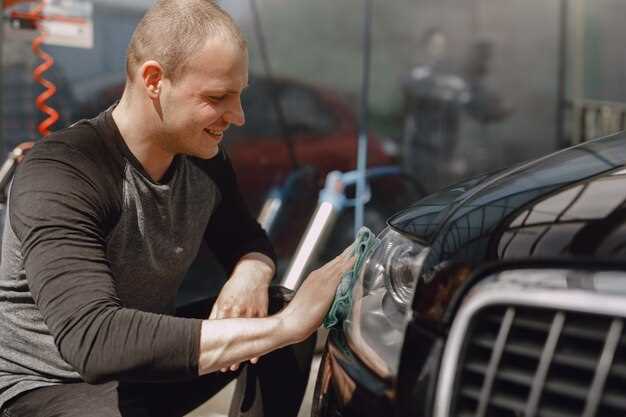
Your vehicle’s windshield is more than just a shield against the elements; it plays a crucial role in your safety while driving. A cracked or damaged windshield can impair your vision and compromise the structural integrity of your vehicle. Recognizing the signs that indicate it’s time for a replacement is essential for maintaining a safe driving experience. Ignoring these signs can lead to more severe problems, including increased repair costs and heightened risks on the road.
One of the most significant signs that you need a windshield replacement is the presence of extensive cracks or chips. Small chips may seem inconsequential at first, but they can quickly escalate into larger cracks, particularly under varying temperature conditions or rough driving. Additionally, if you notice distortion in your line of sight caused by a damaged windshield, it may hinder your ability to see clearly while driving, making replacement imperative.
Furthermore, pay attention to any signs of leaking water or air through the windshield. If moisture enters your vehicle during rain, it not only creates an uncomfortable driving environment but also can lead to interior damage and mold growth. If you encounter any of these issues, it is crucial to assess the situation promptly and consult with a professional to determine if a replacement is necessary.
Cracks and Chips: When to Worry

When it comes to your vehicle’s windshield, even minor damage can escalate into a major safety concern. Cracks and chips in the glass can compromise its structural integrity, making it crucial to know when to take action.
If you notice a chip that is smaller than a quarter, you may have some time before replacement is necessary. However, delay is not advisable. Even small chips can expand due to temperature changes or stress from driving, possibly leading to more extensive damage.
Cracks that are longer than a few inches should be taken seriously. Generally, cracks over 6 inches greatly reduce the effectiveness of the windshield. In such cases, immediate replacement is highly recommended to ensure your safety while on the road.
Location also matters. Cracks or chips located within the driver’s line of sight can significantly impair visibility, increasing the risk of accidents. If this occurs, replacement becomes an urgent necessity, regardless of the damage size.
Pay attention to the age of the damage. Older cracks are more likely to have worsened over time. If you notice any changes or spread in existing damage, seeking a professional assessment is crucial.
In summary, consider the size, location, and age of the damage when evaluating your windshield. Prompt attention can save you from further complications and ensure safe driving conditions.
Poor Visibility: How Damage Affects Your Driving
Driving with a damaged windshield can severely impair your visibility, which is critical for safe driving. Cracks, chips, or fogging can distort your view, making it difficult to see pedestrians, traffic signals, and other vehicles on the road. This impaired visibility increases the likelihood of accidents, as it hampers your ability to react to unexpected situations.
When light hits a cracked windshield, it may create glare or reflections that obscure your vision. This is particularly dangerous when driving at night or during inclement weather conditions. Rain or snow can exacerbate the issue, as damage can prevent windshield wipers from functioning optimally, leading to further visibility issues.
In addition to immediate visibility problems, a damaged windshield may compromise the structural integrity of your vehicle. In an accident, a weakened windshield can fail to provide adequate support, increasing the risk of injury to passengers. Therefore, addressing windshield damage promptly not only enhances visibility but also ensures greater safety for everyone in the vehicle.
Being proactive about windshield repairs or replacements can significantly improve your driving experience. Ensuring clear sightlines reduces stress and increases confidence behind the wheel. Regular inspections can help catch minor damages before they escalate into major problems, safeguarding yourself and others on the road.
Age and Wear: Recognizing Signs of Deterioration

The age of your windshield plays a significant role in its integrity and safety. Over time, exposure to the elements, temperature fluctuations, and general wear can lead to deterioration that necessitates replacement. Understanding the signs of aging can help you determine when it’s time to take action.
1. Visible Cracks and Chips: As your windshield ages, it becomes more susceptible to cracks and chips from road debris. These imperfections can spread quickly, compromising the structural integrity. If you notice any visible damage, it is crucial to assess its depth and width. A small chip may be repairable, but larger or multi-faceted cracks usually warrant a full replacement.
2. Distortion or Cloudiness: Over time, UV rays and environmental conditions can lead to cloudiness or distortion in the glass. This visual impairment can impede your visibility while driving, increasing the risk of accidents. If you observe significant distortion, it may be time to consider a replacement.
3. Aging Seals and Adhesives: The seals that hold your windshield in place deteriorate over time due to weather exposure and age. If you notice gaps, moisture leaks, or if the adhesive appears to be breaking down, these are indicators that replacement may be necessary to maintain a secure fit and prevent leaks.
4. Frequent Repairs: If you find yourself constantly repairing minor chips and cracks, it may indicate that your windshield has reached the end of its lifespan. Frequent repairs indicate that the glass is weakened and unable to withstand further damage, suggesting that a complete replacement is a more viable long-term solution.
5. Old Manufacturing Date: Windshields have a typical lifespan of about 10 to 15 years. If your windshield is approaching this age or older, it may be more prone to issues that could jeopardize your safety. Regularly check for the manufacturing date to gauge if it’s time to consider an update.
Recognizing these signs of aging and wear can help you ensure your vehicle remains safe and functional. If you identify any of these indicators, consult a professional to evaluate whether a windshield replacement is necessary for your vehicle.

